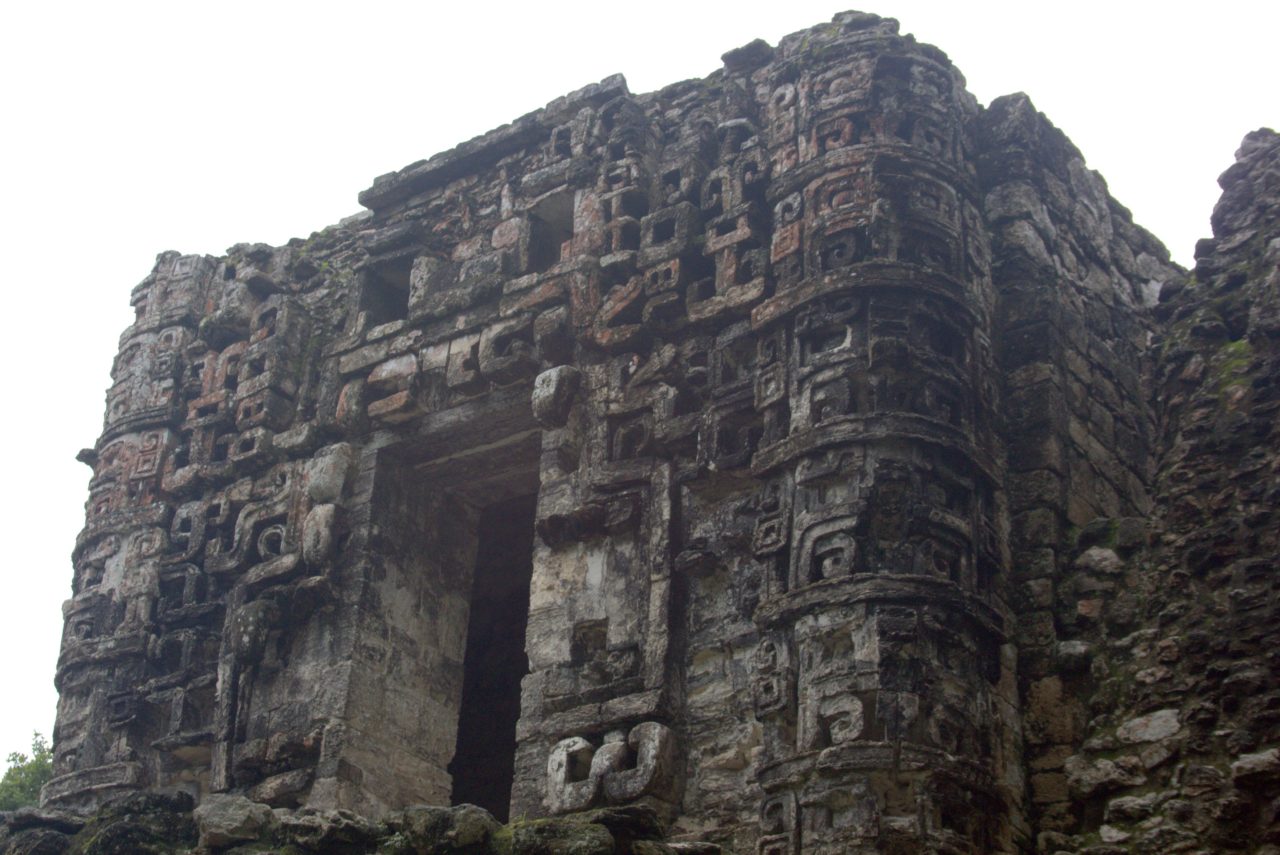HORMIGUERO
Archaeological Area El Hormiguero Campeche, the city that has the entrance to the mayan underworld and a cultural richness. Its name comes from a camp of the chicle-extractors that existed near the archaeological remains at the decade of the 30, of the past century. Its main architectural feature is a building which facade is divided in three, having at its center a huge mask flanked by towers of rounded corners with simulated staircases typical of that region. The mask shows, as a form to enter the temple, a monstrous mouth opening its fauces.
This type of architecture takes us to a location in which its maximum splendor is located around the years of 600 to 830 a.c., during the Late Classic or ceramical Liana phase.
This era is known by a cultural disintegration that was a more or less sudden one, regarding the areas, because it reflects without any doubt, the massive intrusion in the Bec River area of groups originating from the Puuc, that were guided by a military elite that carried a specialized armament and of a ceramic tradition of their own.

With regard to the regional importance of this settlement, and in agreement with the characteristic dispersion of the region´s settlements, Hormiguero could have been one of the secondary centers that brought together the southeast population of the zone. Its development can be felt up until the Early Postclassic (830-1200 a.c.), date in which the majority of the cities of this territory were abondoned by their leaders. From the archaeological point of view, its importance is relevant due to the fact that it is located amongst the sites of the Bec River style and the area of the architectural style Petén.
